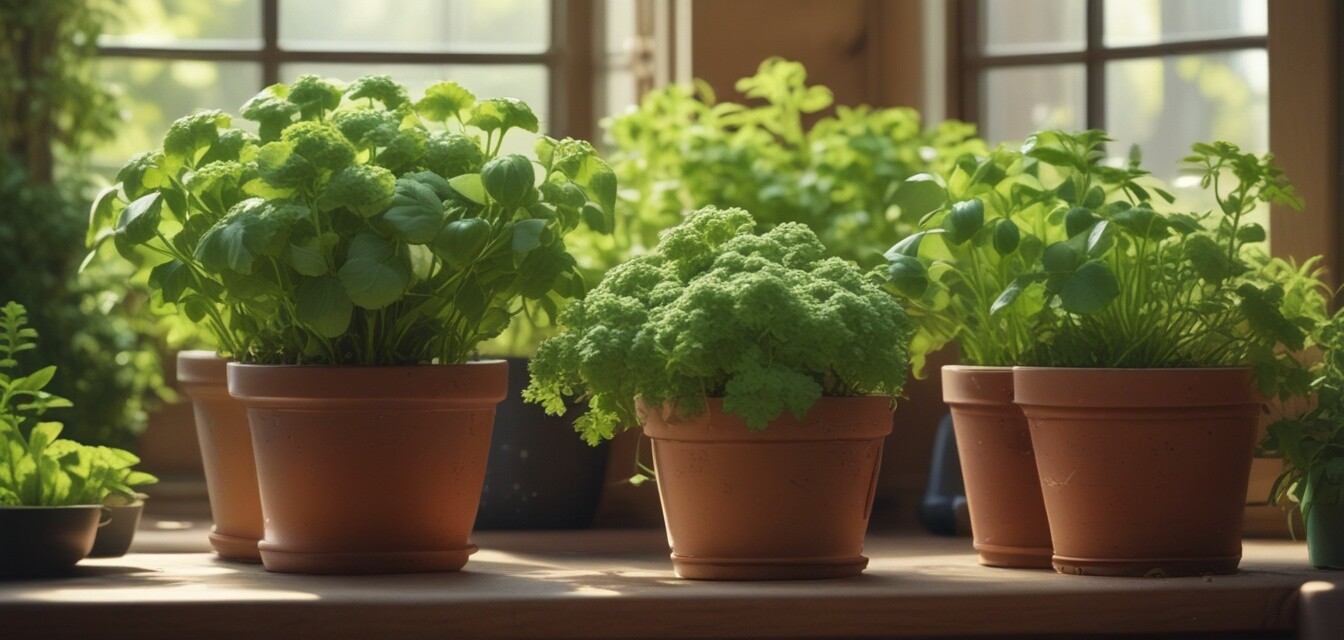
Must-Have Seasoning Plants for Your Kitchen Garden
Key Takeaways
- Seasoning plants can transform your culinary experience.
- Some easy-to-grow options include basil, cilantro, and parsley.
- Growing your herbs allows for fresh ingredients at your fingertips.
- Consider the growing conditions and your kitchen needs when selecting plants.
Growing your own seasoning plants can be a rewarding experience that enhances your culinary creations. This guide covers the must-have seasoning plants that are not only easy to cultivate but also elevate your home-cooked meals with fresh flavors. Whether you're a beginner gardener or a seasoned pro, these plants will make the perfect addition to your kitchen garden.
Top seasoning plants to consider for your kitchen garden
| Plant | Growing Conditions | Uses |
|---|---|---|
| Basil | Full sun, well-draining soil | Italian dishes, pesto, salads |
| Cilantro | Partial shade to full sun | Salsas, curries, salads |
| Parsley | Partial shade, moist well-draining soil | Garnishes, salads, seasoning |
| Oregano | Full sun, well-draining soil | Italian, Mediterranean dishes |
| Thyme | Full sun, well-draining soil | Meats, soups, stews |
How to grow seasoning plants
1. Choose your location
Most seasoning plants thrive in areas receiving ample sunlight. Select a spot in your garden that gets at least 6 hours of sun per day, preferably near your kitchen for easy access. For additional information on how to get the right lighting conditions, check out our guide on Buying Guides.
2. Select the right containers
If space is limited, using pots can make it easy to grow your seasoning plants on a balcony or patio. Ensure the pots have drainage holes to prevent overwatering.
3. Plant and maintain
Prepare your soil with compost to provide essential nutrients. Water the plants regularly, but be sure to allow the soil to dry slightly between waterings. This promotes a strong root system.
Benefits of homegrown seasoning plants
- Freshness: Having fresh herbs on hand can make a noticeable difference in flavor.
- Cost-effective: Growing your own is often cheaper than purchasing from the store.
- Convenience: Access to fresh herbs at any time makes cooking easier.
- Health benefits: Homegrown herbs can enhance the nutritional content of your meals.
Tips for maintaining your seasoning plants
Beginner Tips
- Regularly trim and harvest to encourage growth.
- Watch for pests and take action quickly to prevent infestations.
- Consider companion planting to maximize space and enhance health.
- Keep a gardening journal to track your herbs' progress and preferences.
FAQs about growing seasoning plants
What are the easiest seasoning plants to grow?
Basil, cilantro, and parsley are often recommended for beginners due to their straightforward growing requirements.
How long does it take for seasoning plants to grow?
Depending on the plant, most herbs can be harvested within 4 to 8 weeks after planting.
Can I grow seasoning plants indoors?
Yes! Many seasoning plants grow well indoors, especially with the right lighting conditions.
Conclusion
Incorporating seasoning plants into your kitchen garden not only makes cooking more enjoyable but also contributes to a more sustainable lifestyle. With the right selection of easy-to-grow herbs like basil, parsley, and cilantro, you can enhance your culinary skills and have fresh ingredients on hand. Explore our other garden tools and luxury planters to help you elevate your gardening experience and create your perfect garden space.
Pros
- Enhances the flavor of your dishes.
- Provides fresh ingredients year-round.
- Easy to grow, even for beginners.
Cons
- Some plants require specific growing conditions.
- Pests can be an issue if not monitored.
- Requires regular maintenance for optimal growth.